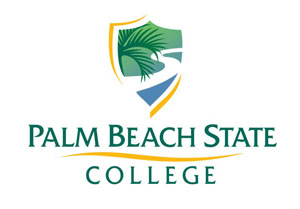Palm Beach State College Director of Facilities John Wasukanis updated Royal Palm Beach Education Advisory Board members on the progress of the college’s new Loxahatchee Groves campus Monday.
The campus, under construction on Southern Blvd., will be the college’s fifth major site.
“As the college continues to focus its growth in the center portion of the county, we spent the past seven to eight years involved in searching throughout the county for construction sites that would become homes for future facilities where we could center our program offerings in a more convenient setting to the local population,” Wasukanis said. “The Loxahatchee Groves project will take quite a number of years to fully realize. As in all our campuses, it’s usually built one or two buildings at a time.”
Construction of the first campus building is slated to start in early April. It will have three computer rooms, 10 classrooms, 16 offices and several student study areas and flexible classrooms.
“We will have a mix of interior and exterior gathering spaces and meeting spaces for students to interface and socialize,” Wasukanis said. “There will be a large, 250-foot meeting space that will be available as part of this building, along with food service and a security office.”
The programs to be offered at that first building will be typical associate’s degree two-year programs also offered at the other sites. “Eventually, with the construction of the other two buildings that are part of the first phase, we hope to have assigned classrooms and a library, as well as a cafeteria service on site, and start to offer a full gamut of educational-type programs,” he said.
The first phase of construction on the 75 acres will be concentrated on the southwest portion of the property, west of a privately owned 22-acre site at the northwest corner of B Road and Southern Blvd. planned for commercial development.
“The rest of the 75 acres is rather heavily wooded in native Florida-type landscape that we actually want to try to maintain as part of the landscape design for the entire campus,” Wasukanis said. “Ultimately, the college will probably see the expansion of certain vocational programs, as well as possibly some of the four-year programs.”
Construction of the first three buildings will probably take about seven years, he said.
“There’s about 180,000 square feet of buildings proposed in the first phase of development. The funding that has been obtained partially from the state and partially with local funds that the college has put together is only for a 50,000-square-foot building that borders the lake right along Southern, along with the associated parking and the road system that connects to B Road and to the traffic signal back at Southern,” he explained.
Wasukanis expects that the development pattern will be similar to the Palm Beach Gardens campus that the college purchased about 40 years ago.
“It’s a heavily wooded parcel and a very beautiful and natural area,” he said. “It contains one of the larger stands of Florida flatwoods timber in this particular area of the county. The college has an interest in development of educational opportunities, but we would like to preserve as much of the site in a natural manner as is possible and make sure that the things that we do out there will be done with the most sensitivity for the natural landscaping.”
Wasukanis said that PBSC staff is investigating the idea of developing the campus as a “net-zero” site, producing as much energy as it consumes.
The site has been approved by the Town of Loxahatchee Groves for a maximum of 650,000 square feet.
“I would think that’s a rather ambitious plan,” Wasukanis said. “It will probably top out at 450,000 or 500,000 square feet, although it has development rights that would allow it to be built to a higher level.”
Most of the college’s campuses have a perimeter road encircling them, but this one’s main access road will be on the inner portion, connecting to both B Road and Southern Blvd., looping around the commercial site with buffering from the commercial area and pervious parking to minimize stormwater runoff.
“The designers came up with a design that will make it convenient to get on and off the property… without having to destroy any more of the native vegetation that exists on the site than is necessary for the purpose of construction,” Wasukanis said.
Palm Tran is planning a park-and-ride program for residents in the western and coastal portions of the county, he added.








